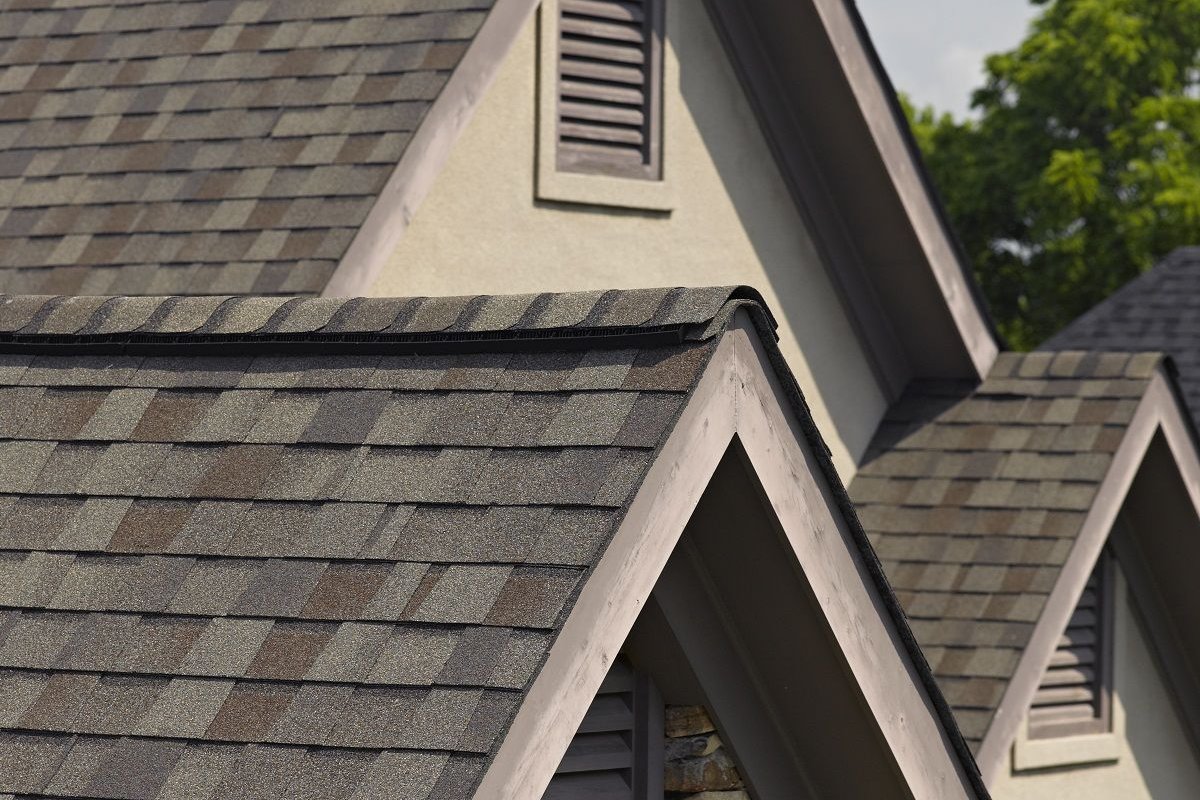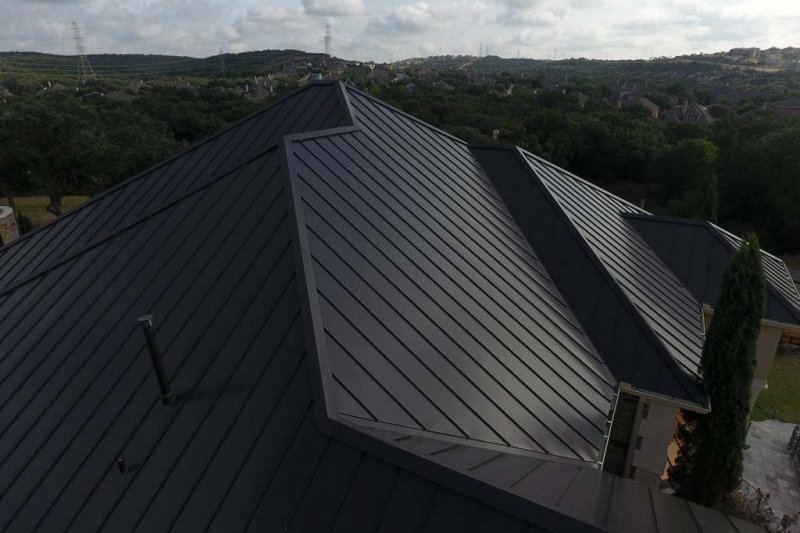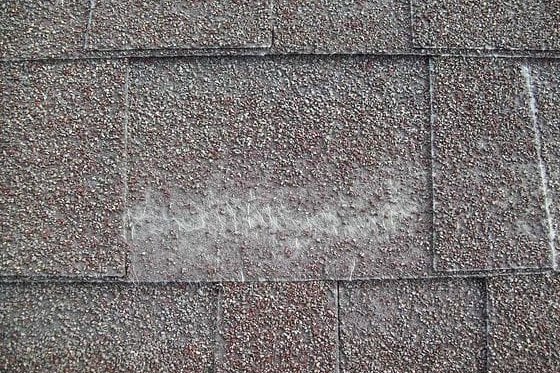Solar Roofing Guide for Wilsonville, Oregon Homeowners
For homeowners in Wilsonville, Oregon, exploring options for energy efficiency and sustainability often leads to considering solar power. Integrating solar technology directly into your roof structure, known as solar roofing, offers a modern, aesthetically pleasing way to generate clean energy while providing essential protection for your home. Unlike traditional panels mounted over an existing roof, solar roofing systems are designed to function as the primary roofing material, blending seamlessly with the architectural style of your home. This guide will walk you through everything you need to know about solar roofing, from its benefits and types to the installation process and cost considerations, specifically with the needs of homeowners in mind.
What is Solar Roofing?
At its core, solar roofing utilizes photovoltaic (PV) technology to convert sunlight into electricity. While the term can broadly include standard solar panels installed on a roof, it most often refers to systems where the solar cells are integrated directly into roofing materials themselves. These can take the form of solar shingles, tiles, or membranes that lie flush with, or replace, conventional roofing materials like asphalt shingles, tiles, or metal panels.
The basic principle is the same as traditional solar panels: sunlight hits the photovoltaic cells, exciting electrons and generating a direct current (DC) electricity flow. This DC electricity is then sent to an inverter, which converts it into alternating current (AC) electricity – the type of electricity used by your home's appliances and the electrical grid.
Solar roofing systems are designed not only to generate power but also to perform the fundamental functions of a roof: providing protection from the elements, shedding water, and contributing to the structural integrity and insulation of the building. This dual functionality is a key differentiator from traditional rack-mounted solar panels.
Understanding the components of a solar roofing system is crucial. Beyond the solar shingles, tiles, or panels themselves, the system includes:
- Inverters: Convert DC power to AC power. These can be central inverters or microinverters attached to individual panels/shingles.
- Mounting Hardware: For integrated systems, this is part of the shingle/tile design. For mounted systems, it's the racks that attach to the roof.
- Wiring and Electrical Components: Safely connect the solar system to the inverter, electrical panel, and the grid.
- Monitoring System: Allows you to track the system's performance and energy production.
- Balance of System (BOS) Components: Includes various electrical components, safety disconnects, and often a new electrical meter capable of handling net metering.
Net metering is a billing mechanism that credits solar energy system owners for the electricity they add to the grid. If your solar roof produces more electricity than you use during the day, that excess power is sent back to the grid, and you receive a credit on your utility bill, typically offsetting electricity consumed at night or other times when production is lower. Policies around net metering vary by location and utility provider.
Benefits of Going Solar with Your Roof
Choosing solar roofing offers a compelling blend of practical and financial advantages for homeowners. Beyond the obvious benefit of generating your own electricity, these systems contribute significantly to a home's value and sustainability profile.
One of the most attractive benefits is energy independence and cost savings. By generating your own electricity, you reduce reliance on your utility provider, potentially lowering or even eliminating your monthly electricity bills. Over the lifespan of the system, which can be 25-30 years or more, these savings can amount to tens of thousands of dollars, depending on the system size, electricity rates, and sun exposure.
Solar roofing is also an environmentally friendly choice. Solar energy is clean and renewable, producing no greenhouse gas emissions during operation. By switching to solar, you reduce your home's carbon footprint and contribute to a healthier environment.
Aesthetically, integrated solar roofing systems offer a significant advantage over traditional mounted panels. Solar shingles and tiles blend seamlessly with conventional roofing materials, maintaining or even enhancing the curb appeal of your home. This is particularly appealing for homeowners who dislike the appearance of bulky panels mounted on racks.
Installing solar roofing can also increase your home's value. Studies consistently show that homes with solar installations sell faster and at a premium compared to comparable homes without solar. Buyers are often willing to pay more for a home that comes with reduced energy costs and a modern, sustainable feature already in place.
Furthermore, many incentives are available at the federal, state, and sometimes local levels to help offset the upfront cost of solar installation. The federal solar investment tax credit (ITC) allows homeowners to deduct a significant percentage of the solar system's cost from their federal taxes. Oregon also offers various incentives or policies that can further reduce the net cost and improve the financial viability of solar projects.
Considering the long-term financial benefits and potential incentives is key when evaluating solar roofing. To understand the potential costs and savings for your specific home and location, getting an initial estimate can be very helpful.
Get your free instant roof estimate
Finally, combining a roof replacement with a solar installation can be a cost-effective strategy. If your roof is nearing the end of its lifespan, integrating solar during the replacement process can save on labor costs compared to installing solar panels on a newer roof later. It ensures the solar system is placed on a durable, long-lasting base.
Types of Solar Roofing Systems
When considering solar roofing, homeowners typically choose between two primary types: integrated solar roofing materials (like shingles or tiles) and traditional solar panels mounted onto a standard roof. While both generate solar power, they differ significantly in appearance, installation, and cost.
Integrated Solar Roofing (Solar Shingles/Tiles)
Integrated solar roofing systems are designed to replace conventional roofing materials entirely or in part.
- Solar Shingles: These are designed to look and function much like traditional asphalt shingles, but incorporate PV cells. They are installed directly onto the roof deck using standard roofing techniques, often requiring specialized wiring connections between each shingle. Brands like CertainTeed and GAF have offered versions of these.
- Solar Tiles: Similar to shingles but designed to mimic the look of traditional roofing tiles (like concrete or clay tiles). Tesla's Solar Roof is a prominent example, aiming for a sleek, modern aesthetic that is virtually indistinguishable from standard roofing tiles.
Pros:
- Superior Aesthetics: Blends seamlessly with the roofline, offering the most discreet look.
- Dual Function: Acts as both the roof covering and a power generator.
- Ideal for New Roofs or Replacements: Most cost-effective when installed as part of a complete roof replacement.
Cons:
- Higher Upfront Cost: Generally more expensive per watt of power than mounted panels.
- Installation Complexity: Requires specialized roofing and electrical expertise.
- Potential for Repair Difficulty: Replacing a single damaged solar shingle or tile can be more complex than replacing a standard shingle or a single mounted panel.
- Efficiency: Some integrated systems may have slightly lower efficiency compared to high-performance mounted panels due to heat buildup or design constraints.
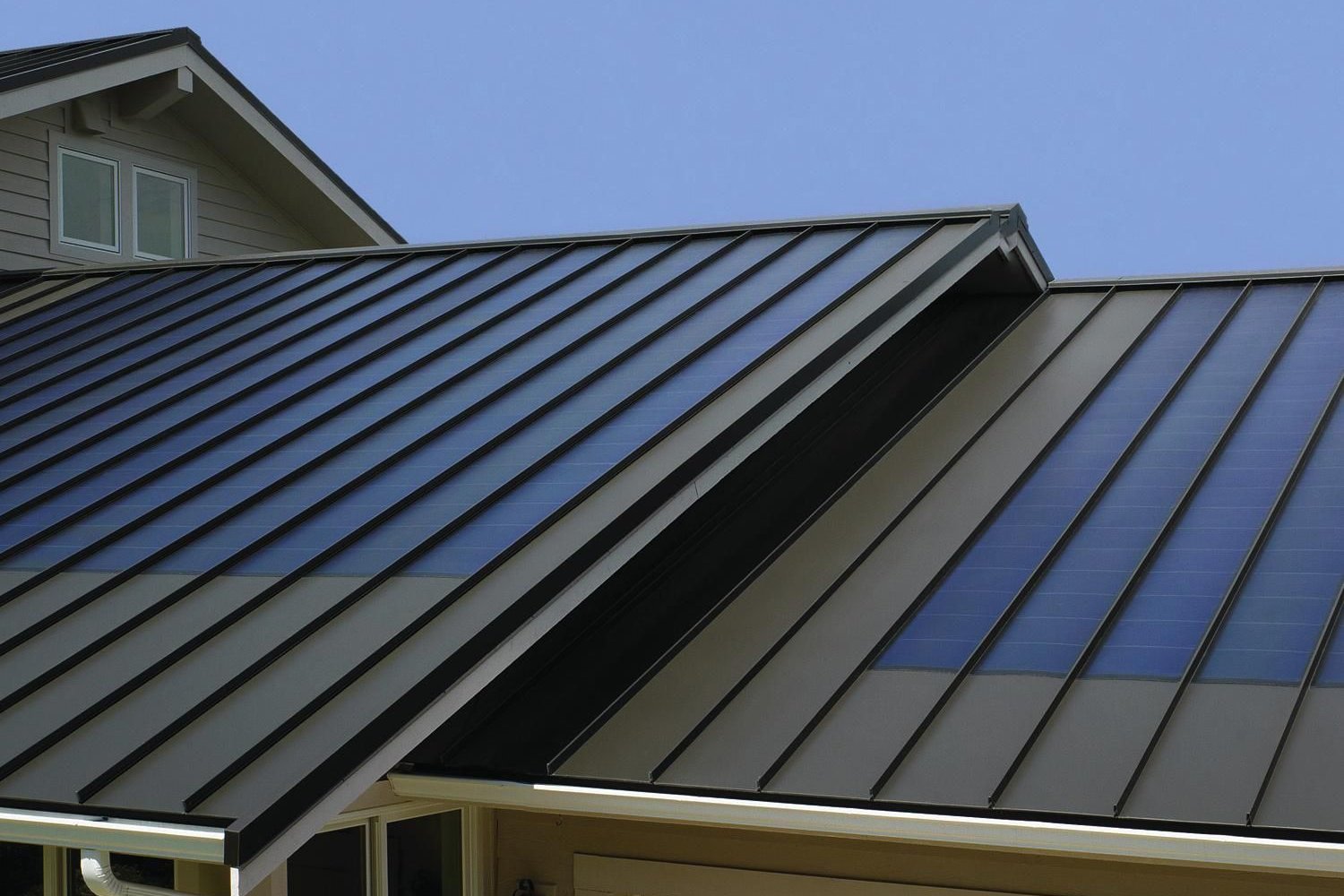
Integrated solar roofing blends with conventional materials.
Mounted Solar Panels
This is the more traditional and currently most common form of residential solar. Standard solar panels (typically rectangular modules) are installed on racks that are attached over an existing or new standard roof covering (like asphalt shingles, metal, or tile).
Pros:
- Lower Upfront Cost: Generally less expensive per watt than integrated systems.
- Higher Efficiency: Mounted panels often use more advanced PV technology and benefit from airflow underneath, keeping them cooler and potentially more efficient.
- Easier Installation: While still requiring professional expertise, the installation process is often less complex than integrating solar into the roof structure itself.
- Easier to Repair or Replace: Individual panels can often be replaced or repaired without disturbing the entire roof structure.
- Suitable for Existing Roofs: Can be installed on a roof that still has several years of life left, although replacing the roof beforehand is often recommended if it's nearing the end of its lifespan.
Cons:
- Aesthetics: Panels are visible and sit above the roof surface, which some homeowners find less appealing than integrated options.
- Requires Existing Roof: The panels provide power but not the primary weather barrier; the existing roof must be in good condition.
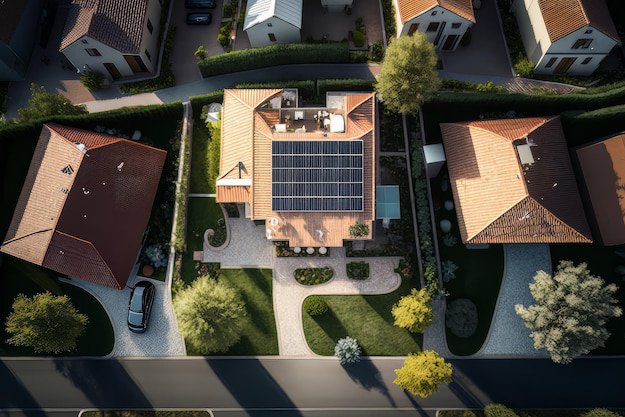
Mounted solar panels are a common residential solution.
Choosing between these systems depends on your budget, aesthetic preferences, current roof condition, and long-term energy goals. Integrated systems are excellent for homeowners prioritizing aesthetics and undertaking a full roof replacement, while mounted panels offer a more cost-effective and flexible option for many.
The Solar Roofing Installation Process
Installing a solar roofing system is a multi-step process that requires coordination between roofing and electrical professionals. It’s significantly more complex than a standard roof replacement or simply mounting panels, especially for integrated systems.
- Initial Site Assessment and Consultation: A solar professional will visit your home to assess its solar potential. This involves evaluating the roof's size, slope, orientation (south-facing is ideal in the Northern Hemisphere), and condition. They will also analyze shading from trees or buildings, your historical energy consumption, and discuss your energy goals and budget.
- System Design: Based on the assessment, engineers design a custom solar system. This includes determining the number and type of solar shingles/panels needed, the inverter type, wiring layout, and how the system will connect to your home's electrical panel and the grid. Structural considerations for the roof are also assessed.
- Permitting and Approvals: This is a critical step. The installer will handle obtaining necessary permits from the local building department and approvals from your utility company. Permitting processes can vary significantly and may involve structural reviews, electrical plans, and adherence to local codes. In areas like Wilsonville, Oregon, understanding specific local requirements is part of this process.
- Roof Preparation or Replacement: If you're installing integrated solar roofing as part of a replacement, the old roofing material is removed down to the deck. Any necessary repairs or upgrades to the roof deck (e.g., replacing damaged plywood/OSB) are completed. For mounted systems, the existing roof must be in good condition, and mounting points are carefully planned.
- Installation of Roofing and Solar Components:
- Integrated Systems: The solar shingles or tiles are installed section by section, often alongside standard roofing materials on parts of the roof that don't receive sufficient sun. The electrical connections between the solar components are made during this phase. Underlayment and flashing are installed first, just like a standard roof.
- Mounted Systems: Flashing and mounting hardware are securely attached to the roof structure. The solar panels are then mounted onto the racks, and electrical wiring is run through the roof to the inverter location.
- Electrical Wiring and Inverter Installation: Electricians connect the solar array to the inverter and then to your home's main electrical panel. This may involve upgrading your panel or meter depending on the system size and existing electrical infrastructure.
- Utility Connection and Inspection: After installation is complete, the system must pass inspection by the local building department and potentially the utility company. Once approved, the utility company installs or enables a meter for net metering, and the system can be activated.
The entire process, from initial consultation to system activation, can take several weeks to a few months, largely depending on permitting times and scheduling.
Installing solar roofing is a complex project involving both roofing and electrical expertise. It's essential to work with qualified professionals who have experience with solar installations. If your current roof needs attention before installing solar, or if you need an assessment of your roof's condition, consider booking a professional appointment.
Book a roofing appointment
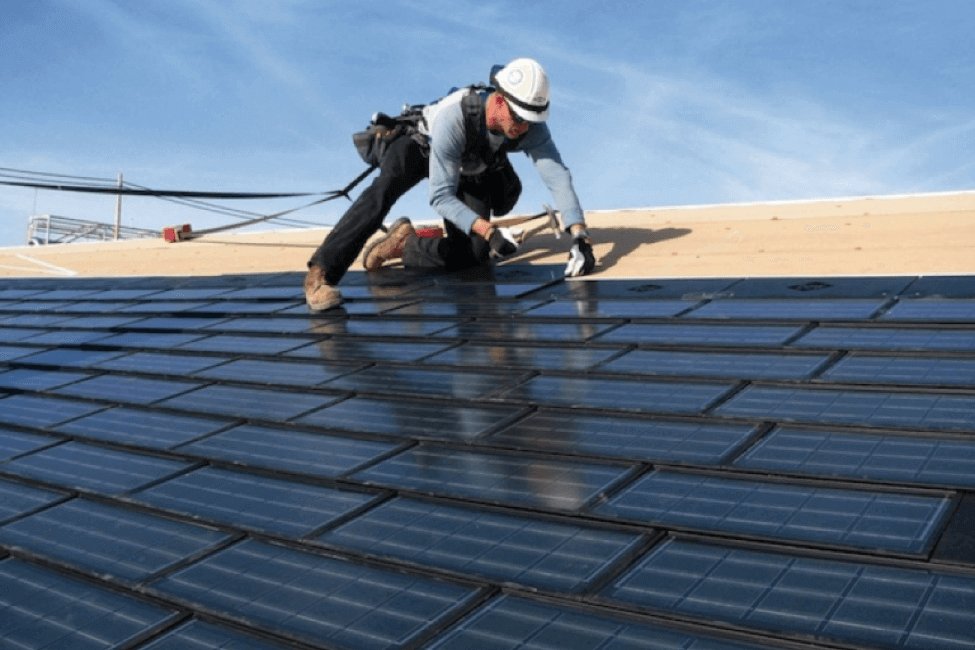
Professional installation is crucial for solar roofing.
Cost Considerations and Financial Incentives
The investment in solar roofing varies significantly based on several factors, including the type of system (integrated vs. mounted panels), the size of the system (measured in kilowatts or kW), the complexity of your roof, labor costs, and the specific components used. Integrated solar shingles or tiles are generally more expensive per watt than standard mounted panels.
Factors Influencing Cost:
- System Size: Larger homes or higher energy users need larger systems, increasing the total cost.
- System Type: Integrated systems typically have a higher material cost.
- Roof Condition and Complexity: If the existing roof needs significant repairs or replacement, or if the roof has multiple angles, dormers, or skylights, labor costs can increase.
- Component Quality: Higher efficiency panels or more advanced inverters can increase upfront costs but may offer better long-term performance.
- Labor Costs: These vary by region and the complexity of the installation.
While the upfront cost can be substantial, numerous financial incentives can significantly reduce the net cost and improve the payback period.
Key Incentives:
- Federal Solar Investment Tax Credit (ITC): This is the most significant incentive, allowing homeowners to deduct a percentage of the cost of their solar system from their federal taxes. The percentage has varied but has often been around 30%.
- State and Local Incentives: Oregon offers various incentives, including tax credits, rebates, or performance-based incentives, which can further reduce the cost. Net metering policies also add financial value by crediting you for excess energy sent to the grid.
- Property Tax Exemption: In many areas, including Oregon, adding a solar system increases your property value but does not increase your property taxes.
- Sales Tax Exemption: Some states exempt solar equipment from sales tax. Oregon does not have a state sales tax, so this is less of a factor locally.
It's crucial to research current, specific incentives available in your area when planning your project. A reputable solar installer can help you navigate these options.
Understanding the potential cost and available incentives is a major step in planning your solar roofing project. Getting a preliminary estimate can help you budget and explore financing options.
Estimate your solar roofing cost
Beyond incentives, financing options like solar loans, home equity loans, or Power Purchase Agreements (PPAs) can make solar roofing more accessible by spreading the cost over time. When evaluating the cost, always consider the long-term savings on electricity bills and the increase in home value, which contribute to the overall return on investment.
Choosing the Right System and Installer
Selecting the right solar roofing system and finding a qualified installer are perhaps the most critical steps in ensuring a successful project.
Choosing the System:
- Assess Your Energy Needs: Review past electricity bills to understand your average consumption. This helps determine the appropriate system size needed to meet your energy goals (e.g., offsetting 50%, 80%, or 100% of your usage).
- Evaluate Your Roof: Consider its age, condition, slope, orientation, and any potential shading issues. If your roof is old, combining solar installation with a full roof replacement is often the most practical and cost-effective approach.
- Aesthetic Preference: Decide if the seamless look of integrated solar shingles/tiles is worth the higher cost compared to mounted panels.
- Budget: Determine your budget and explore financing options.
Choosing the Installer:
- Experience with Solar Roofing: Look for installers with specific experience in residential solar installations, and ideally, experience with the type of system you are considering (integrated or mounted).
- Certifications and Licenses: Ensure the installer is properly licensed as both a roofing contractor and an electrical contractor, or partners with licensed professionals for each aspect. Look for certifications like those from the North American Board of Certified Energy Practitioners (NABCEP).
- References and Reviews: Ask for references from previous customers and check online reviews.
- Warranties: Understand the warranties offered – typically separate warranties for the solar panels/shingles (performance and product), the inverter, and the installation workmanship.
- Insurance: Verify that the installer carries adequate liability and worker's compensation insurance.
- Transparent Quotes: Get detailed quotes that break down costs for materials, labor, permits, and estimated incentives.
Don't rush the process of choosing an installer. Get quotes from multiple reputable companies and compare them carefully. Ask questions about their process, the equipment they use, and their projected energy production estimates.
Selecting a qualified and experienced installer is crucial for the longevity and performance of your solar roofing system. If you need help finding pre-vetted local roofers experienced with solar readiness or full roof replacements, SkyQuote can connect you directly.
Find qualified roofing professionals
Maintenance and Longevity of Solar Roofing
One of the advantages of solar roofing systems, particularly mounted panels, is that they generally require minimal maintenance.
- Mounted Panels: Rain often helps wash away dirt and debris. However, occasional cleaning may be necessary if pollen, dust, or bird droppings accumulate and significantly impact performance. This can often be done with a hose from the ground or by a professional cleaning service. It's also wise to periodically check for any debris buildup, especially around the edges or under the panels.
- Integrated Systems: Maintenance is similar to standard roofing – keeping gutters clear and ensuring no debris accumulates on the roof surface. Cleaning may be needed, similar to mounted panels.
Regular monitoring of your system's performance via the monitoring system is the best way to detect potential issues early. A sudden drop in energy production could indicate a problem, such as shading, a faulty component, or debris buildup.
The longevity of solar roofing components is impressive:
- Solar Panels/Shingles: Typically come with performance warranties guaranteeing a certain percentage of their original output (e.g., 80%) after 25 years. The physical product warranty is usually 10-12 years, covering defects.
- Inverters: Central inverters typically have a lifespan of 10-15 years and may need to be replaced once during the system's life. Microinverters often have longer warranties, sometimes matching the panel warranty (25 years).
- Roofing Material (for integrated systems): The non-solar parts of solar tiles/shingles are designed to last as long as the solar components, often 25-30 years or more, comparable to high-quality traditional roofing materials.
While solar roofing is low maintenance, it's not zero maintenance. Periodic checks and understanding your monitoring system are recommended. If you notice issues or need a roof inspection to ensure it's in good condition for solar, prompt professional attention is important.
Schedule a roof inspection
Potential Issues and Troubleshooting
While reliable, solar roofing systems can occasionally encounter issues. Knowing what to look for and when to call a professional is important.
Common issues include:
- Performance Degradation: A gradual decrease in energy production over time is normal, but a sudden or significant drop could indicate a problem. Causes can include increased shading (new tree growth), dirt/debris buildup, or a faulty panel or inverter.
- Physical Damage: Hail, falling branches, or other impacts can damage solar panels or integrated roofing materials. This requires professional assessment and repair.
- Wiring Issues: Faulty connections or damaged wiring can reduce performance or pose safety risks.
- Inverter Problems: The inverter is a critical component and can fail. Monitoring systems often alert you to inverter issues.
If you suspect a problem, first check your monitoring system for error codes or performance data. Ensure panels are not heavily shaded or covered in debris. If the issue persists, contact your installer or a qualified solar technician.
It's also important to consider the roof structure itself. While solar components are durable, the underlying roof deck, underlayment, and flashing are still subject to wear and tear. Proper installation includes ensuring these components are robust.
Addressing potential issues promptly is key to maximizing your solar investment and protecting your home. If you have concerns about your roof's condition or potential damage, especially after severe weather, don't delay seeking professional help.
Book a roofing appointment
Frequently Asked Questions About Solar Roofing
Many homeowners have questions when exploring solar roofing options. Here are answers to some common inquiries:
Q: What is solar roofing?
A: Solar roofing refers to systems that integrate solar panels directly into roofing materials, allowing homeowners to generate electricity while protecting their homes. It is a growing technology with significant energy-saving potential and offers a modern, eco-friendly alternative to traditional roofing. It can take the form of solar shingles, tiles, or panels designed to function as the primary roof covering, unlike standard solar panels mounted on top of an existing roof.
Q: How long do solar roofing systems last?
A: Most solar roofing systems, including both integrated materials and mounted panels, are designed to last 25-30 years or more. Solar panels/shingles typically come with performance warranties guaranteeing output for 25 years, and product warranties for 10-12 years. Inverters may need replacement during this period, depending on the type.
Q: Can solar roofing withstand harsh weather?
A: Yes, solar roofing materials and panels are designed to be highly durable and withstand various weather conditions, including rain, snow, wind, and hail. They must meet rigorous testing standards. Installation methods also ensure the system is securely attached and watertight.
Q: Does solar roofing require sunlight to work?
A: Solar roofing systems require sunlight to generate electricity. Performance is highest on clear, sunny days. However, they can still produce some power on cloudy or overcast days, albeit at a reduced rate. The amount of sunlight available throughout the year in locations like Wilsonville, Oregon, is factored into system design and energy production estimates.
Q: Will solar roofing increase my home insurance costs?
A: In most cases, adding a solar system does not significantly increase home insurance costs. It's considered an addition to your home, similar to a renovation. However, it's important to inform your insurance provider about the installation to ensure it is covered under your policy.
Q: What happens if the power grid goes down?
A: Most grid-tied solar roofing systems are designed to automatically shut down during a power outage. This is a safety feature to protect utility workers who may be working on the grid. If you want backup power during outages, you would need to add a battery storage system to your solar installation.
Powering Your Home with the Sun
Embracing solar roofing is a significant step towards energy independence, environmental sustainability, and potentially increasing your home's value. Whether you opt for the seamless integration of solar shingles or the proven efficiency of mounted panels, understanding the technology, installation process, and financial implications is crucial for making an informed decision. For homeowners in Wilsonville, Oregon, leveraging solar energy makes sense both environmentally and economically, contributing to lower bills and a reduced carbon footprint.
Planning a solar roofing project requires careful consideration of your energy needs, budget, and roof condition. While the initial investment is notable, the long-term savings, incentives, and increased home value offer substantial returns. Taking the first step to explore your options is easier than ever.
Curious about the potential cost of a solar-ready roof replacement or a full solar roofing system for your home? Get a rapid, satellite-based estimate.
Estimate your roofing costs
Ready to connect with qualified local professionals who can discuss solar roofing options or assess your current roof's suitability? Schedule an appointment directly.
Find local roofing experts
Making the move to solar roofing is an investment in your home's future, offering reliable energy production and peace of mind for years to come.
